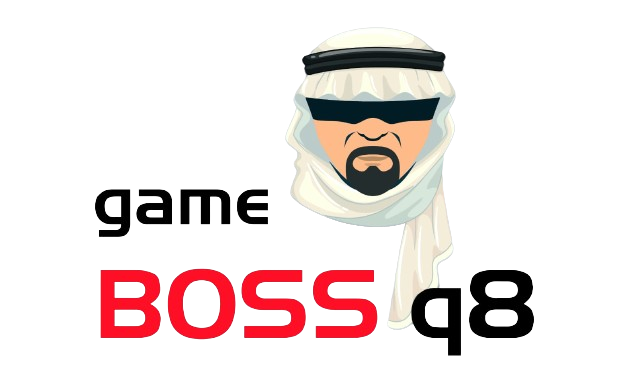In the rapidly evolving digital landscape, capturing and maintaining user attention is both an art and a science. User engagement refers to the depth of interaction and emotional investment users have with digital platforms, whether gaming, education, or social media. High engagement levels translate into longer sessions, increased loyalty, and more meaningful interactions, which are vital for the success of any digital experience.
A core principle underpinning effective engagement strategies is **progression**—a systematic way of guiding users through increasing levels of challenge, content, or achievement. Modern systems brilliantly leverage this principle, creating immersive experiences that feel rewarding and motivating. From mobile apps to online learning platforms, progression acts as a bridge between user effort and satisfaction, fostering sustained interest.
2. Core Mechanisms of Progression
3. Case Study
4. Advanced Techniques
5. Non-obvious Dimensions
6. Challenges & Considerations
7. Future Trends
1. Educational Foundations of Progression in User Experiences
Understanding why progression enhances engagement benefits from insights in cognitive psychology and educational theory. Theories such as Vygotsky’s Zone of Proximal Development emphasize that learners (or users) thrive when tasks are slightly beyond their current ability, provided there is clear guidance. Structured advancement allows users to build on prior knowledge, fostering confidence and mastery.
Additionally, the psychology of motivation—particularly self-determination theory—indicates that autonomy, competence, and relatedness are key to sustained engagement. Progression systems tap into these needs by providing clear goals, achievable milestones, and social recognition. For example, when a language learning app unlocks new levels as users improve, it satisfies their need for competence, encouraging continued use.
Applying educational principles to entertainment and digital experiences transforms abstract concepts into practical design. For instance, gamified educational platforms embed progression to keep learners motivated, illustrating how structured advancement can be both educational and entertaining.
2. Core Mechanisms of Progression in Modern Systems
Modern systems use several core mechanisms to implement progression effectively:
- Leveling systems, tiers, and unlocks: These create a tangible sense of achievement. For example, in gaming, players unlock new abilities or content as they ascend levels, maintaining motivation.
- Retained progression: Maintaining continuity ensures users feel their efforts matter over time. This can involve saving states, persistent rewards, or long-term goals.
- Dynamic content expansion: Systems adapt complexity based on user performance, keeping challenges appropriately scaled. Adaptive learning platforms often personalize difficulty to sustain engagement.
These mechanisms work synergistically to foster a sense of growth and investment, motivating users to keep exploring and improving.
3. Case Study: Pirots 4 – A Modern Illustration of Progression in Practice
While the concept of progression is timeless, modern games like pirats4 first time here exemplify how these principles are applied today. Pirots 4 demonstrates layered progression through features such as bonus modes, feature unlocking, and content expansion, illustrating the educational foundations in action.
In Pirots 4, players encounter:
- Bonus games with regular and super bonus modes, providing immediate gratification and long-term incentives
- The Space Bandit feature, which unlocks additional gameplay layers as players progress
- Corner bombs that expand the grid, offering new strategic opportunities
These elements foster ongoing engagement by providing varied rewards and escalating challenges, keeping players invested over extended periods.
4. Advanced Progression Techniques in Modern Systems
Beyond basic mechanisms, modern systems incorporate sophisticated techniques such as:
- Gamification elements: badges, leaderboards, and social sharing foster community engagement and a sense of achievement.
- Adaptive difficulty: personalized progression paths ensure users face appropriate challenges, reducing frustration and enhancing satisfaction.
- Multi-layered rewards: combining immediate incentives with long-term goals sustains motivation across different timeframes.
Such techniques create a layered experience that appeals to diverse user motivations, encouraging continued interaction and mastery.
5. Non-obvious Dimensions of Progression and Engagement
Progression isn’t solely about unlocking content or achieving higher levels; it also involves emotional and psychological factors. For example:
- Narrative and thematic progression: Storytelling can deepen emotional investment, making users eager to see the next chapter or reveal.
- Surprise and unpredictability: Incorporating unexpected rewards or twists keeps users intrigued and prevents monotony.
- Cross-system integration: Linking features or games for a seamless experience enhances overall engagement, as users feel part of a larger journey.
“Effective progression strategies tap into both rational motivation and emotional resonance, creating experiences that are not only engaging but also memorable.” – Industry Expert
6. Challenges and Considerations in Implementing Progression Systems
While progression enhances engagement, designers must address potential pitfalls:
- Balancing challenge and reward: Overly difficult systems can frustrate users, while too easy ones lead to boredom.
- Progression fatigue: Excessive or poorly spaced milestones may diminish motivation; meaningful milestones are essential.
- Ethical considerations: Transparency about progression mechanics and respecting user autonomy build trust and prevent manipulative practices.
Effective progression systems are transparent, fair, and provide genuine value, ensuring long-term user satisfaction.
7. Future Trends: Evolving Progression Strategies in Digital Experiences
Looking ahead, technology offers new avenues to enhance progression:
- AI-driven personalization: Tailoring progression paths based on user behavior and preferences.
- Augmented and virtual reality: Creating immersive environments where progression is experienced physically and emotionally.
- Data analytics: Leveraging real-time data to optimize content delivery and reward timing, maximizing engagement.
These innovations promise to make progression even more seamless, intuitive, and compelling, ensuring that user experiences remain captivating and sustainable.
8. Conclusion: Unlocking Engagement Through Thoughtful Progression Design
In summary, progression acts as a powerful lever in designing engaging digital experiences. Its roots in educational psychology and motivation theories offer valuable guidance for creating systems that are both effective and ethically sound. Modern examples, like Pirots 4, embody these timeless principles through innovative features that motivate and retain users.
As technology advances, integrating personalization, immersive environments, and data-driven insights will further enhance progression strategies. By thoughtfully combining these elements, developers and educators can craft experiences that are not only engaging but also meaningful and sustainable.
For those interested in exploring how these principles translate into practical design, the comprehensive guide to Pirots 4 offers valuable insights into modern implementation, illustrating how educational foundations remain relevant amidst technological innovation.




